 |
Columbus & Greenville Railway Inspection Automobiles |
Over the years, the Columbus & Greenville rostered a number of automobiles converted with flanged wheels for use as rail inspection vehicles. First in the collection was Ford sedan #1, later converted back to road use when no longer needed for inspection runs. A Nash sedan was next purchased in 1947, but proved too light for rail travel and was retired a year later. However, the pride of the series was a 1948 Buck sedan outfitted with a custom-built 4-wheel leading truck for smoother riding. This second #1 served the railroad's inspection and public relations needs for many years.

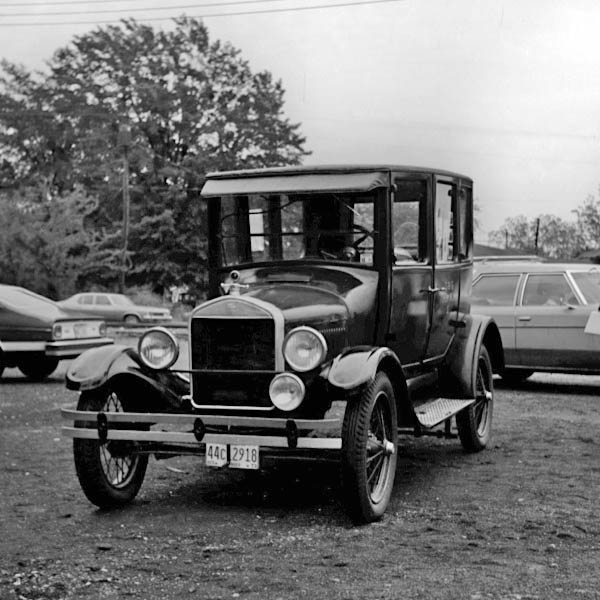
Columbus & Greenville #1
Ford sedan (1927) / Columbus, Ms / May 1975 / JCH
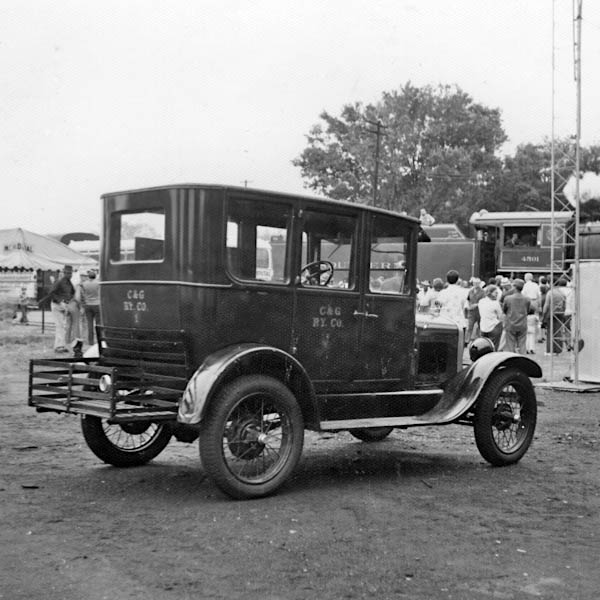
Columbus, Ms / May 1975 / JCH
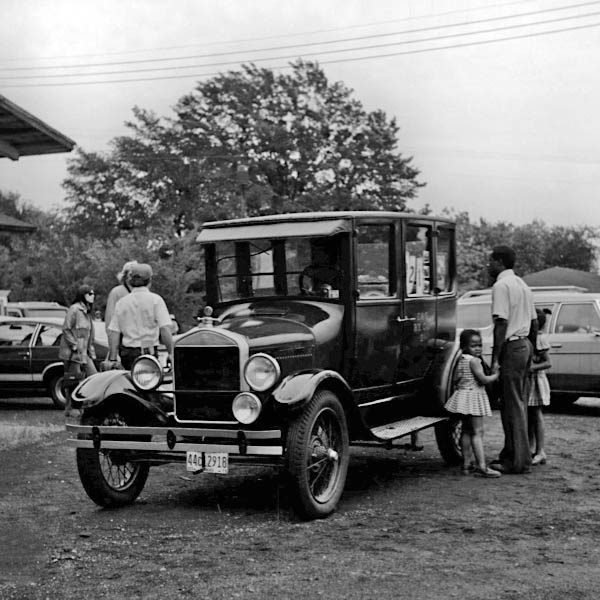
Columbus, Ms / May 1975 / JCH
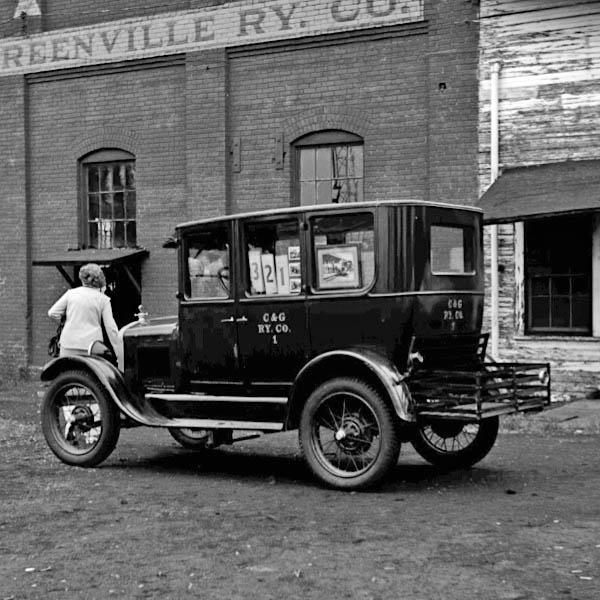
Columbus, Ms / May 1975 / JCH
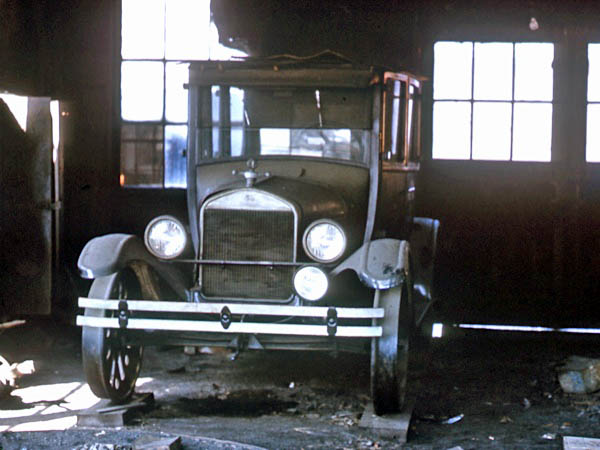
Columbus, Ms / Feb 1970 / collection
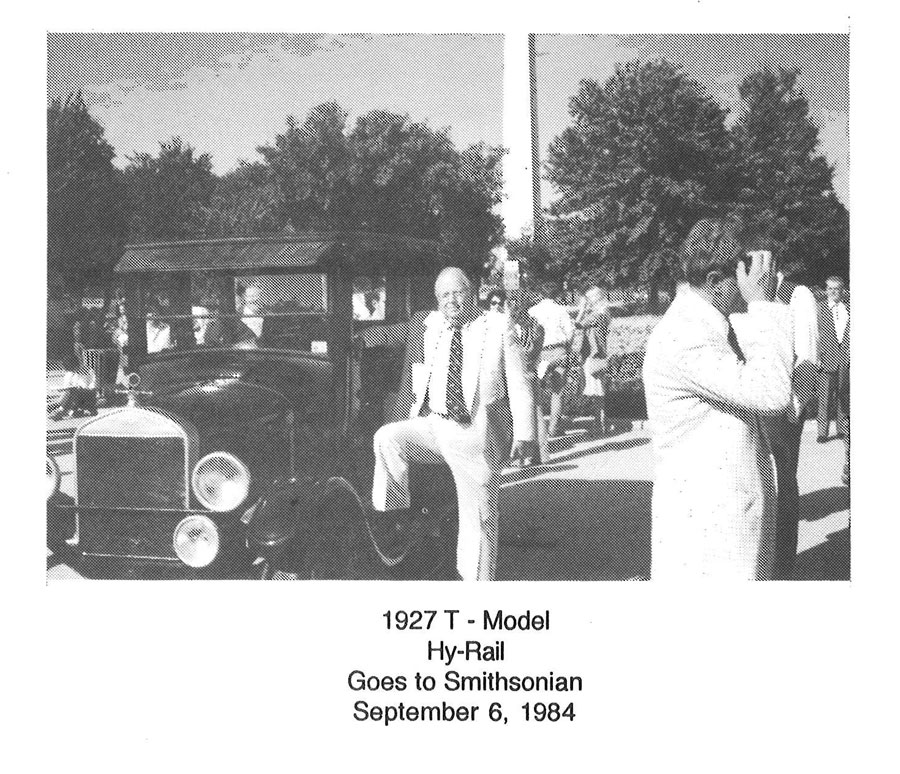
collection
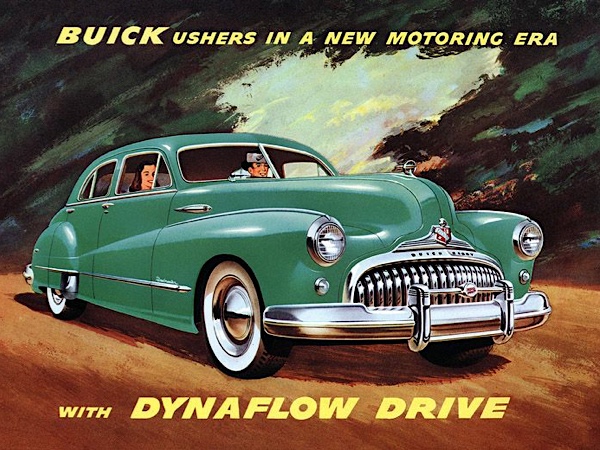
web

web
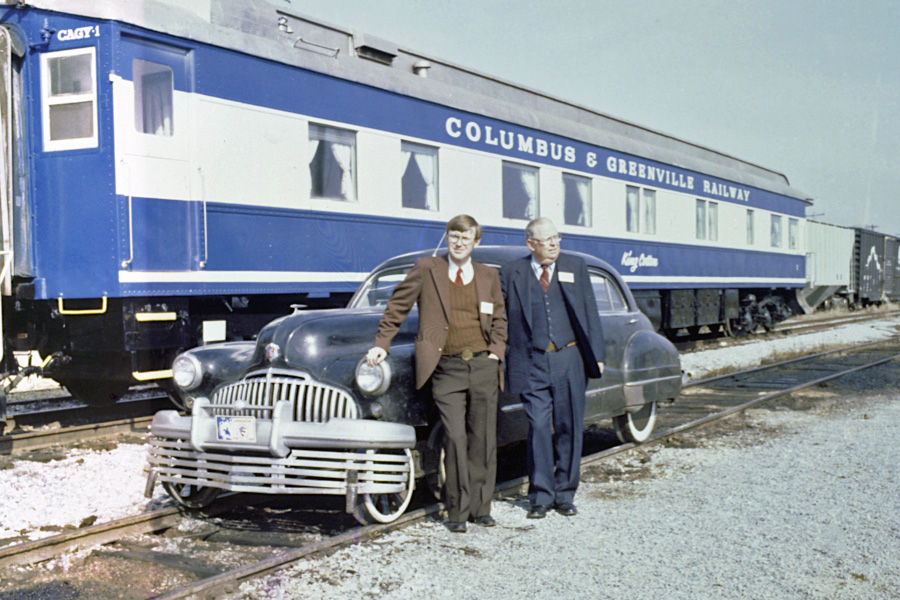
Columbus & Greenville #1
Buick sedan (1948) / Greenwood, Ms / Feb 1982 / collection
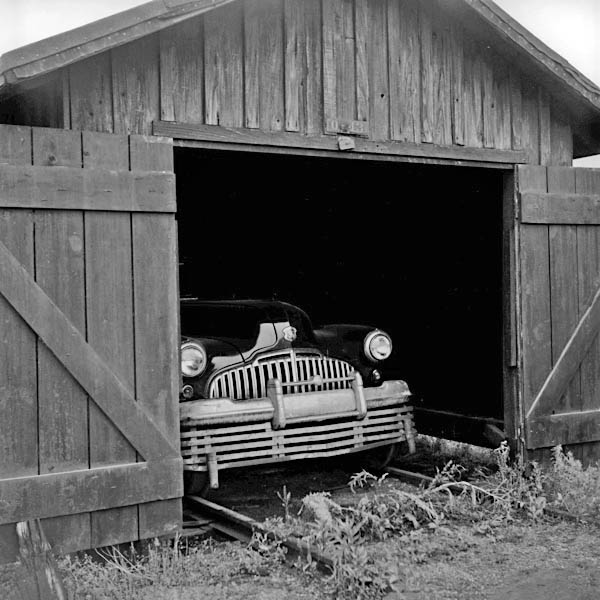
Columbus, Ms / May 1975 / JCH
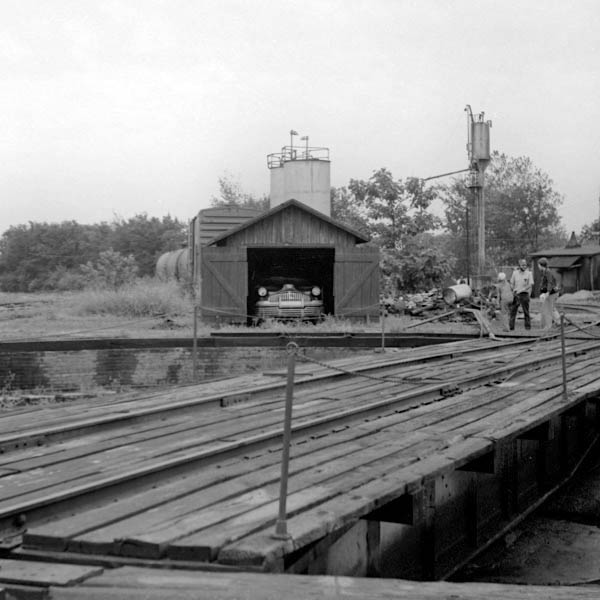
Columbus, Ms / May 1975 / JCH
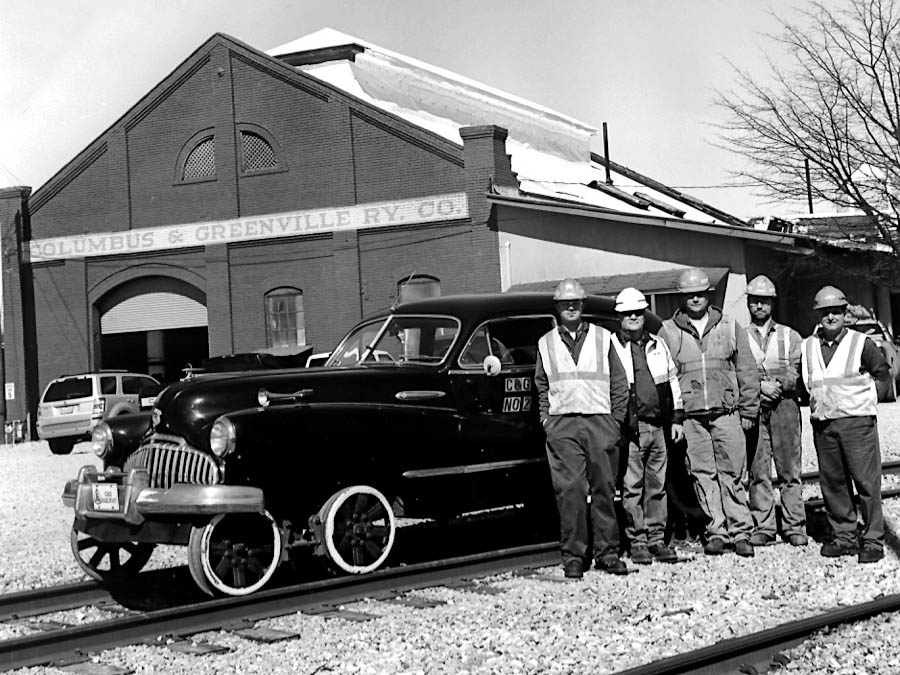
Columbus, Ms / Feb 2010 / Louis Saillard
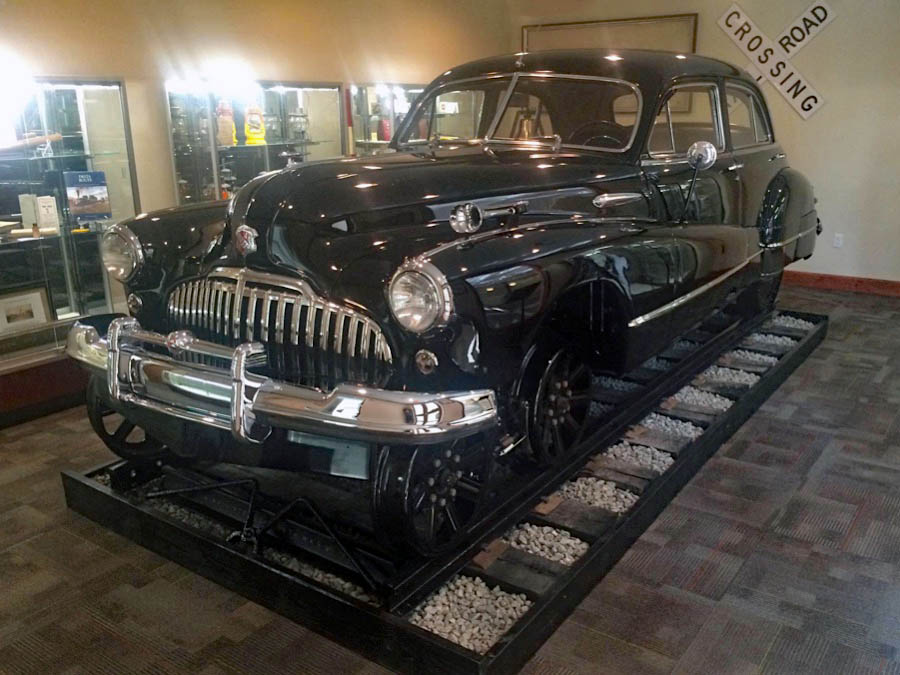
Columbus & Greenville #1
on display at Genesee & Wyoming facility / Jacksonville, Fl / Jon Clark

Inspection Car No. 1 - "The Buick"
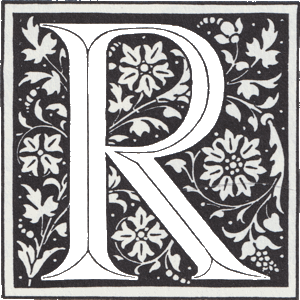 ailroad officials have traditionally used their private "office" cars on special trains to tour the railroads they managed, visiting customers, inspecting work being done and shaking the hands of railroad workers all along the line. But when the automobile became common after World War I, it was obvious to some officials that a motor car on flanged railroad wheels was a cheaper and more convenient alternative for many of these tasks.
ailroad officials have traditionally used their private "office" cars on special trains to tour the railroads they managed, visiting customers, inspecting work being done and shaking the hands of railroad workers all along the line. But when the automobile became common after World War I, it was obvious to some officials that a motor car on flanged railroad wheels was a cheaper and more convenient alternative for many of these tasks.
Mississippi's 168-mile Columbus & Greenville Ry. purchased its first inspection car, a Ford Model-T sedan for $867.34 on August 28, 1927. It was delivered with two sets of interchangeable wheels which allowed it to operate on traditional roads or on railroad tracks as required. The car was designated C&G No. 1. "The T-model" served the C&G Ry. for almost twenty years before being retired and stored in the railroad's blacksmith shop at Columbus, Miss. It was later restored, occasionally displayed at public functions in Mississippi, and ultimately donated to the Smithsonian Institution in Washington, D. C. on September 6, 1984.
The railroad's next inspection car (designated C&G No. 2) was a Nash 600 purchased for $1495.00 on October 11, 1947. The C&G spent an additional $270.00 before the end of that year to replace the rubber auto tires with steel flanged wheels and convert it for use on rails. But operating the Nash on only four steel wheels proved it to be an unstable vehicle, suitable only for low speeds and prone to derailment. The Nash was re-converted to a highway vehicle in September 1948.
That same month, on September 29, 1948, the C&G purchased a Buick for $3,050.25 and initially assigned it to the railroad's traffic manager, Z. P. Hawkins. With the retirement of Nash No. 2, the Buick was converted (at a cost of $583.17) to rail operation. The C&G master mechanic W. A. Trayler, Jr. designed a four wheel lead truck for the Buick, using rail motor car wheels, to provide greater stability. The new inspection car was designated as the new C&G No. l, but the railroaders in Columbus generally called it "the Buick." Columbus newspaperman Stuart Covington featured "the Buick" for The Birmingham News on January 17, 1965. He reported that the car's top speed was a remarkable 35-miles per hour, that it still had the original engine after 17 years of service and that it averaged what Covington called a "phenomenal" eighteen miles per gallon of gasoline. The car was assigned to C&G President Robert C. Stovall Sr., and generally ran a round trip from Columbus to Greenville once a month, with the trip lasting three days. Master Mechanic Trayler explained that "the safari" lasted so long because frequent stops were made to inspect track, roadbed, trestles and an occasional right of way structure. The inspection party ordinarily made it to Greenwood, 113 miles west of Columbus on the first day. Then No. 1 rattled to Greenville and back to Greenwood the second day. The third day was consumed by the Greenwood—Columbus return trip. When not out on the road, "the Buick" resided in a little red garage next to the Columbus roundhouse.
Master Mechanic Trayler reported that Buick No. 1 had never been involved in a collision or derailment. In fact, author Stewart Covington could find only one memorable incident regarding the car. As he told the story: "No. 1 with President Stovall aboard was crossing the lengthy Tombigbee River trestle, a few miles west of Columbus, when a skunk abruptly appeared on the tracks. There was no time to halt the car. No. 1 dispatched the striped trespasser to join his ancestors, but the departed skunk left behind a remembrance which quickly filled No. 1. Since the auto was on a long trestle its occupants were obliged to whiff the skunk's aroma for almost a mile as the car clattered slowly across the high trestle. Upon reaching the other end, the stifled occupants set out on foot."
"The Buick" remained in storage at Columbus into the 21st century. After the railroad was purchased by G&W Industries, it was moved to the company's regional office in Jacksonville in 2012.
Louis R. Saillard, author of Delta Route: A History of the Columbus & Greenville Railway